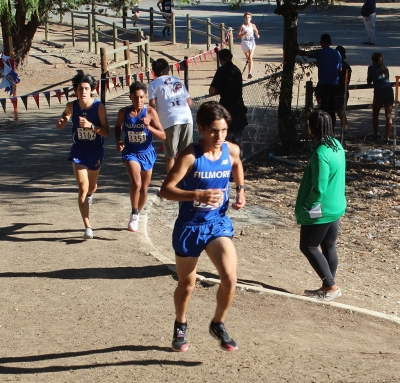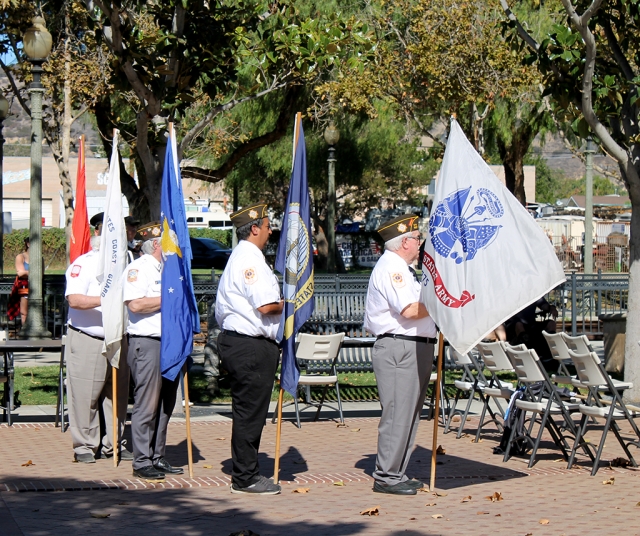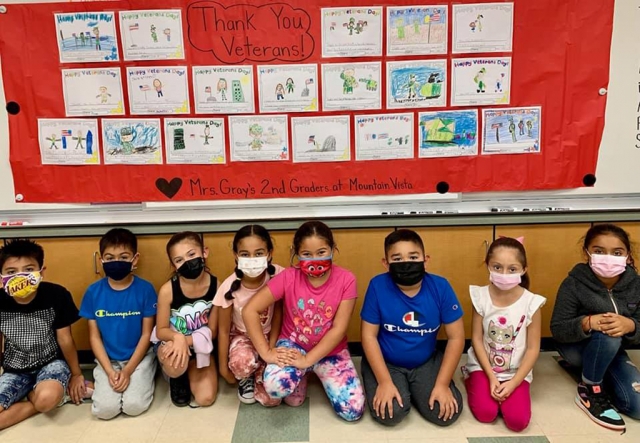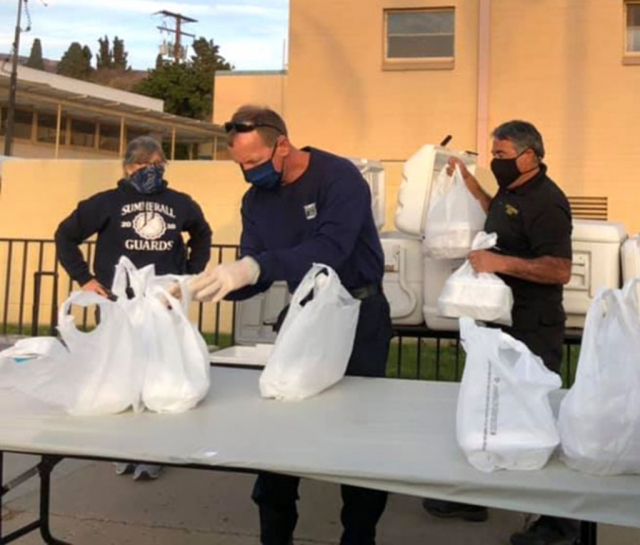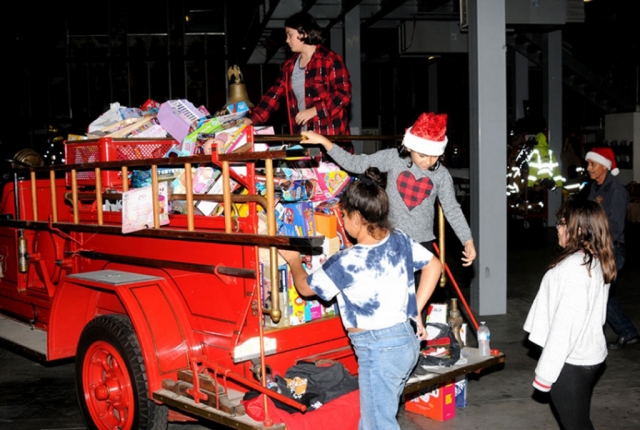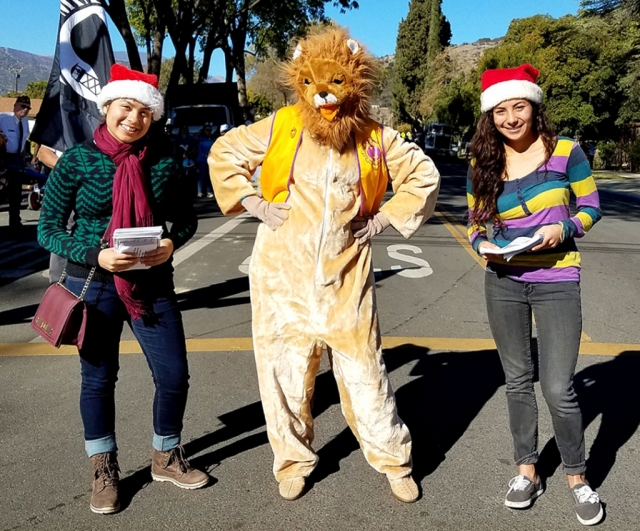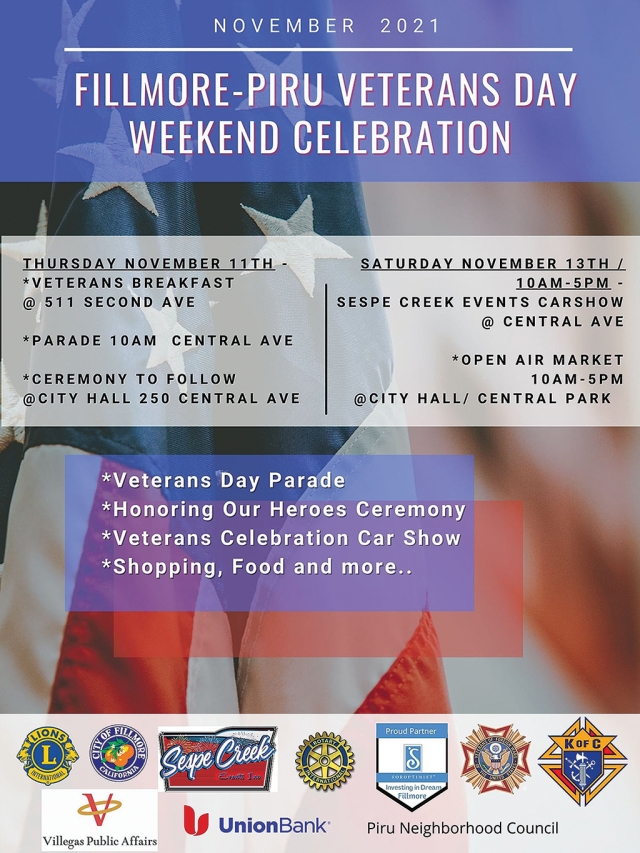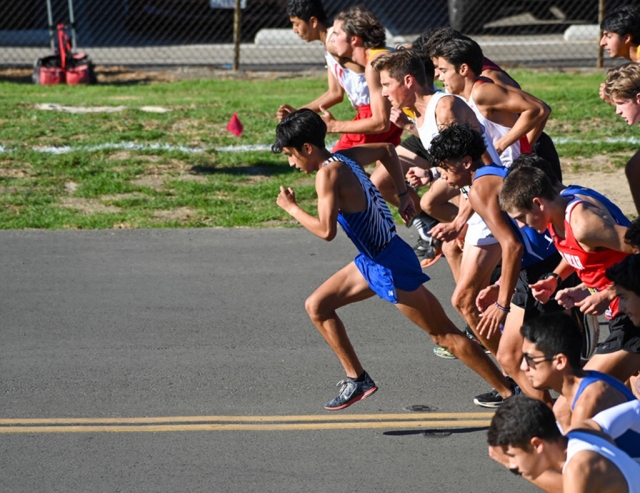 Dashing out in front of starting line Fillmore’s Camilo Torres who placed 2nd in the Mt. SAC Course this past Friday; the Flashes boys’ team had 8 individual qualifiers in their race advancing the team into the CIF SS Division 4 Finals. Photos Courtesy Coach Kim Tafoya. Enlarge Photo By Gazette Staff Writers — Wednesday, November 17th, 2021
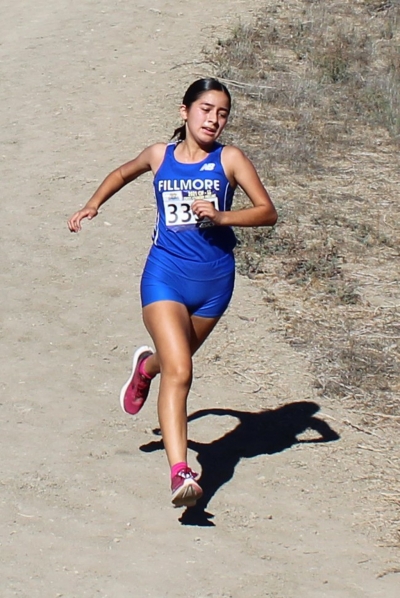 Fillmore’s Andrea Laureano on her way down Reservoir Hill at the 2021 CIF Prelims Andrea finished 57th with a time of 23:47.4. Enlarge Photo On Friday, November 12th, the Fillmore boys and girls Varsity cross country teams traveled to Walnut, California to compete on the legendary Mt. SAC Course. Thirty eight teams in three heats of the boys and forty two teams in the girl race, also divided into three heats competed to finish among the top 16 teams to advance into next week's CIF Southern Section Division 4 Finals. In first race of the day for the Flashes, the boys toed the start line along with 12 other teams. This race featured 3 ranked teams, and 8 individual qualifiers. Leading the Flashes was team Captain Camilo Michael Torres. Camilo ran at the front, as he has throughout the season and finished in second posting a time of 15:53.8. Camilo was followed by Joshua Estrada 25th in 17:49.1, Nicholas Hurtado 30th in 18:00.9, Kobe Lizarraga 33rd in 18:06.6, Diego Ramirez 41st in 18.30.2, Eduardo Vigil 50th in 19:00.1, and Angel Laureano 65th in 19:49.1. Earning a berth in the Finals, teams had to finish among the top 5 teams in their heat, or be the fastest 6th team. Fillmore captured 6th place in their heat. Then came the long wait for the final heat to finish in order to compare times for the fastest sixth place. Fillmore boy squeezed out a victory over the other 2 sixth place teams by a margin of 2 seconds. The girls followed. This race also featured 3 ranked teams and 7 individual qualifiers. The Flashes were led by Niza Laureano 26th in 21:40.0, followed by Nataly Vigil 35th in 22:17.1, Athena Sanchez 41st in 22:49.4, Diana Santa Rosa 46th in 23:12.3, Andrea Laureano 57th in 23:47.4, Monique Hurtado 58th in 23:48.2, and Angelica Herrera 65th in 24:28.0. As a team in this heat, the girls finished in 8th. After a fine year, the girl’s season ended on Friday. Next Saturday, the boy’s team returns to Mt. SAC to compete in the SS CIF D4 Cross Country Championships. In order to advance and compete in State Finals they must finish in the top 7. The race start time is 8:05. |
|
By Gazette Staff Writers — Wednesday, November 17th, 2021
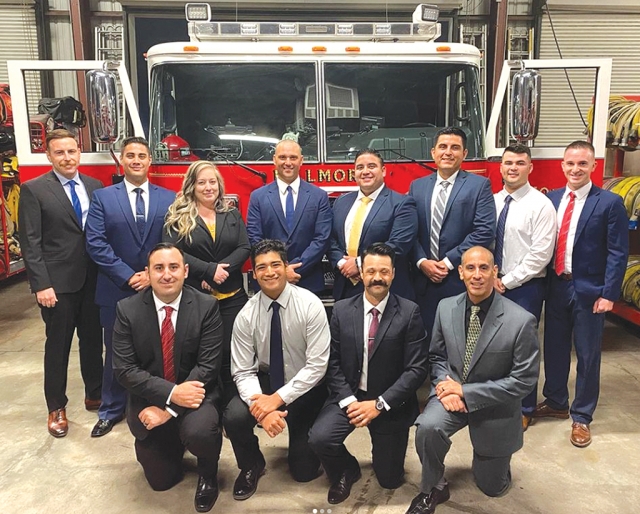 Fillmore Fire Department is proud to announce their newest Fillmore firefighters and firefighter paramedics! They are sworn in as the Department’s 9th Academy Class. Their six month probation period will include field and classroom training, written and manipulative exams, and a final test. Courtesy Fillmore Firefighters Instagram page. Enlarge Photo |
|
By Gazette Staff Writers — Wednesday, November 17th, 2021
 Every year, the Lion’s Club International holds a poster contest to promote world peace. The Fillmore Lion’s Club selects one poster submitted by a local student to be entered into the regional contest. Katelyn Villegas, a student at Fillmore Middle School, was chosen to represent Fillmore with her winning poster. When asked to define the significance of her poster, Katelyn said, “Together we will create a brighter future for the world.” She got a certificate and $50. The other finalists were Faith Marcelino and Maria Vargas who each received certificates and $25. Thank you to Ms. Doris Nichols, art teacher at FMS, who every year encourages middle school students to create beautiful and meaningful works of art. Also, congratulations to all the students who entered peace posters. There were many excellent posters. As always, Fillmore is proud of our students and teachers. Enlarge Photo |
|
By Gazette Staff Writers — Wednesday, November 17th, 2021
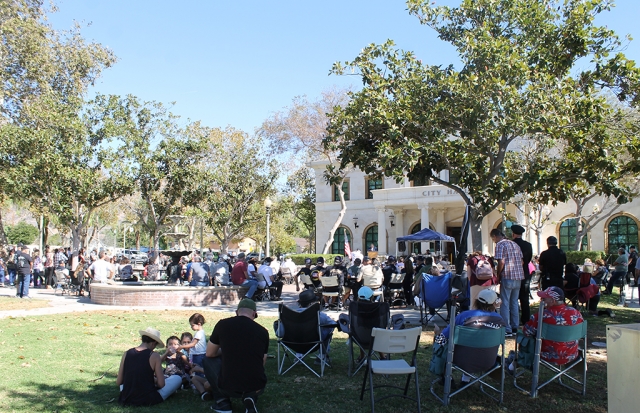 In front of Fillmore City Hall crowds of Veterans along with residents came out to show their respect to our Hero’s at the Veterans Day Ceremony. Each military branch was recognized. In attendance were speakers John Munoz of Fillmore who spoke about helping fellow veterans, and Deej Fuentes of Camarillo who spoke of her service in the Marines. Also in attendance for the ceremony were the Fillmore Police and Fire Departments, Fillmore City Council, Fillmore VFW Post 9637 and more. Enlarge Photo |
|
By Gazette Staff Writers — Wednesday, November 17th, 2021
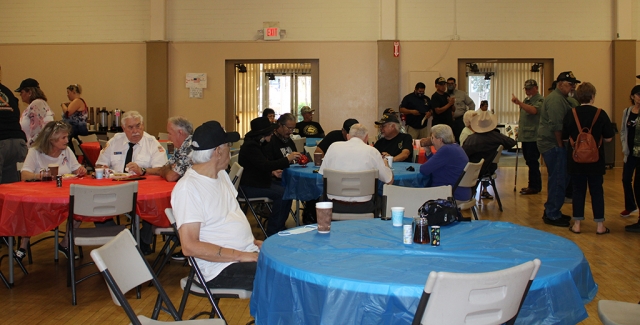 On Thursday, November 11th, before the Veterans Day Parade, a pancake breakfast was held for Veteran’s and their spouses to enjoy at the Fillmore-Piru Veterans Memorial Building. Inside, walls were decorated with signs from Fillmore students. One of the signs read “Thank You for Your Service!” from the 3rd graders at Mountain Vista. Enlarge Photo |
|
By Gazette Staff Writers — Wednesday, November 17th, 2021
Courtesy Fillmore Fire Department |
|
By Gazette Staff Writers — Wednesday, November 17th, 2021
This year’s annual Fillmore Community Holiday Giveaway will be held Saturday, December 11th from 9 AM – 12 PM at Two Rivers Park, the corner of River St and “D” St. This is the annual event where holiday commodities are given to the children who reside within the Fillmore Unified School District boundaries. Due to COVID-19 restrictions, the location and format of the Giveaway has changed. This event will be a drive-thru, contactless format. Anyone wishing to receive holiday commodities must preregister prior to December 6th. The age and gender of each child will need to be included so that age appropriate toys, reading books and socks may be pre-package for pick up. Because of COVID-19 restrictions, personal sizing of coats will not be available, instead, nice warm individual blankets will be distributed to each child. As is customary, a holiday bag of groceries will also be available. To ensure that Santa is well for Christmas delivery of toys, he will only be available to wave at the children from a distance this year. Everyone must remain in their vehicle. To preregister for the Holiday Giveaway go to the City of Fillmore website at www.fillmoreca.com/Home/Components/News , you must provide proof of residency within the School District. Annual sponsors of the event include our local Fillmore Police and Fire Departments, Santa Clara Valley Legal Aid, One Step A La Vez, Soroptimist International of Fillmore, Rotary International of Fillmore, Fillmore Lions Club, Ventura County Deputy Sheriff’s Association, Fillmore Citizen’s Patrol, Fillmore Women’s Service Club, Fillmore Friends of the Library, Super A, The Fillmore Fire Foundation and numerous other generous personal and business donors. Our sponsor list will be updated week to week. If you would like to help donate to the Fillmore Community Holiday Giveaway, you may give new toys, socks, reading books or canned food; drop boxes are located at the Fillmore Police Station and at the Fillmore City Fire Station. Monetary donations are preferred this year to reduce person to person contact, checks may be made out to “The Fillmore Fire Foundation” with a notation of “Holiday Giveaway”. Donations may be mailed to Fillmore Fire Foundation, PO Box 331, Fillmore , CA 93016 or for drop off, please contact Scott Beylik (805) 732-1101 or Keith Gurrola (805) 558-0932. |
|
By Gazette Staff Writers — Wednesday, November 17th, 2021
Don’t forget to join in the Fillmore Lions Club Christmas Parade coming up in December. Parade participant applications can be found on their website: www.fillmorelionsclub.org. |
|
By Gazette Staff Writers — Wednesday, November 10th, 2021
On Thursday, November 11th, in honor of Veterans Day, Fillmore will celebrate with the traditional Veteran’s Day breakfast at the Fillmore Piru Veterans Memorial Building. The Veterans Day Parade rolled down Central Avenue, with a ceremony following at Fillmore City Hall. On Saturday, November 13th, from 10am to 5pm, a Veterans Day car show will be held on Central Avenue, hosted by the Sespe Creek Car Club. These events are sponsored by the City of Fillmore, Fillmore Lions Club, Fillmore Rotary Club, Fillmore VFW, Piru Neighborhood Council, Knights of Columbus, Soroptimist Club, Villegas Public Affairs, Union Bank and Sespe Creek Car Club. |
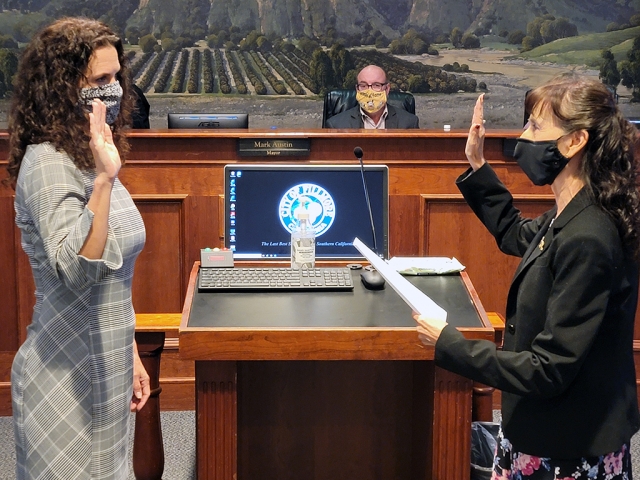 Fillmore City Council Member Simone Alex was sworn in at last night's council meeting. Alex was appointed to serve until the next election. Enlarge Photo By Gazette Staff Writers — Wednesday, November 10th, 2021
The oath of appointment of Council Member Simone Alex was heard and she took her place on the Council. The Trunk or Treat People's Choice Award was tabled until the next meeting. A Proclamation declaring November 2021 Native American Heritage Month in the City of Fillmore was read by Mayor Mark Austin. Emergency repairs to Well #8. Most of the items which remained to be completed are now finished. Sanding content reduced to an acceptable level. New equipment has been installed. Water samples being taken to confirm purity acceptable. Well up and running Monday or Tuesday of next week. Hope to declare emergency over by December 14. Parking on Hwy. 126: City Engineer Roxanne Hughes updated Caltrans agreement with City for restrictions on curbside parking of large trucks. Questions about putting a sidewalk along this area (north along 126) is City responsibility, not Caltrans'. Staff recommendations were unanimously approved. Potable Water System assessment. City Engineer was asked by Council Member Lynn Edmonds that process be more proactive rather than reactive with completion of related requirements. Motion carried unanimously. NEW TRUCK FOR CODE ENFORCEMENT. Motion to authorize City Manager to negotiate with local Bunnin Chevrolet of Fillmore for purchase of new truck approved. 8-D: Council approves ordinance (21-933) to adopt State Model Water Efficient Landscape Ordinance - exemption from CEQA. City Manager asks for Prop. 68 Parks "PER CAPIA" Grant, of $187,000. Discussion of ADA needs. 10-15 things needed for compliance. Fiscal impact approx. 234,000. 25 % match. $850,000 available. Approved. COMMENTS. Two requests to reopen catch basin at Rio Vista Park for general recreation. |

